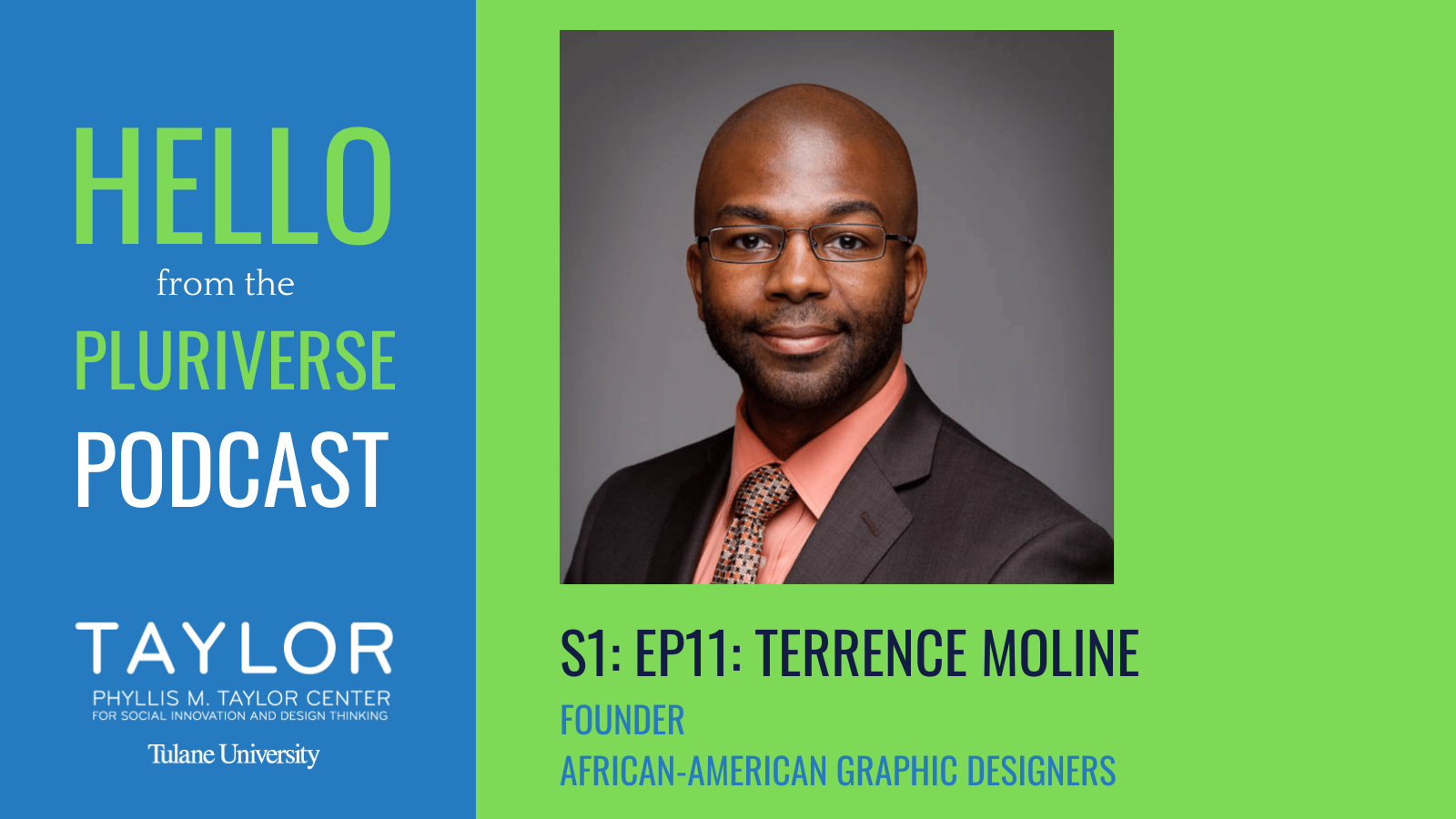“Terrence Moline’s passion is infusing people’s stories with images to create art.”
Terrence Moline is a director, designer, illustrator currently based out of Austin, Texas. He also builds communities and transforms stories with illustrations to generate art that conveys meaning. He is the founder of the community “African-American Graphic Designers” as is committed to uplifting and amplifying the voices of Black designers and creative professionals.
Connect with Terrence:
Instagram: @tmoline
Pluriverse Publication Chapter: Terrence Moline
Written by Alicia Buenaventura and edited by Michaeline Anglemire.
Download a PDF Layout of the Terrence Moline chapter in the Pluriverse Publication.
Terrence Moline learned a powerful lesson about resilience early in his life. In our interview, he recounted that he played basketball when he was younger, but when his basketball net broke, he was forced to spend an entire summer practicing his dribbling rather than shooting jump shots. The following year, he found that he had become such a proficient dribbler that he was made his basketball team’s point guard. Through this experience, Terrence learned the immense value of practice and repetition. It planted the seed that simply starting somewhere can generate a snowball effect that cascades into the creation of something worthwhile. It not only exposed him to a fundamental aspect of design; it rewarded him with a deeper understanding of the world that led him further into the creative field.
In addition to his athletic involvements when he was younger, Terrence performed in competitive choir and did graphic design layouts for his high school’s yearbook. Working on the yearbook committee taught Terrence how to manipulate text, photos, and images to convey messages and meaning. These early experiences eventually inspired him to study music and graphic design at Loyola University in New Orleans. While his music background influenced—and continues to influence—Terrence’s creative perspective, the more he explored graphic design, the more he felt he wanted to make design and illustration his career.
Terrence established his career as a New Orleans-based designer and illustrator; his clientele was largely New Orleans-based, as well. Things changed drastically when Hurricane Katrina uprooted the lives and livelihoods of millions of New Orleans residents, Terrence’s design business included. He was then tasked with finding a place to continue the work he had started in New Orleans. This process of reinvention brought the question of identity to the forefront of Terrence’s awareness. His personal identity had guided his decision to work with predominately Black clients, as well as his commitment to using design to elevate Black voices and empower organizations that work with Black issues. This passion subsequently guided Terrence in his search for a community like the Black community of New Orleans to work with post-Hurricane Katrina. Terrence created an online community called “African-American graphic designers,” a place where designers of similar identities could connect and collaborate on projects. The success of this platform allowed clients to more easily connect with designers all over the world. The community has gone on to work alongside criminal justice reform organizations, Princeton’s Black student alumni, large corporations, and small mom-and-pop shops. In this way, Terrence was able to maintain his goal of uplifting Black designers, and even expand this endeavor to cross borders and bridge geographic gaps. In the face of tragedy, Terrence was able to create a new community even more powerful than the one Hurricane Katrina had affected.
Though Terrence has not had much experience with design thinking as a specific concept, he expressed that it could be beneficial to businesses and designers as an innovative and powerful method to break into traditional thinking with a design perspective. His advice for non-designers is to not get caught up in the process, and to embrace the idea of not following a rulebook. There is no right way to design; following a rulebook suppresses and narrows powerful and creative ideas. Using rules as a starting framework can be productive, but beyond that, creativity is about thinking outside of structures. Terrence invites us to remember that projects can only be so creative and innovative when they are pigeonholed to a process, no matter how liberating that process claims to be.
- Instagram: @hellopluriverse
- Twitter: @hellopluriverse
- Email: taylor@tulane.edu
- Subscribe to our newsletter
The Hello from the Pluriverse Podcast aims to open up and create a space to have conservations about the pluriversality in design.
This podcast is a project of the Design Thinking for Social Innovation Program at the Phyllis M. Taylor Center for Social Innovation and Design Thinking at Tulane University.
Executive Producer: Lesley-Ann Noel, Ph.D
Sound editing
- Max Esperance
- Lavonte Lucas: xn--vonni-fsa.com, Instagram: @vonnieradass, Twitter: @vonnieradass
Hello from the Pluriverse 2020-2021 Student Team
- Max Esperance – Podcast lead
- Natalie Hudanick and Michaeline Anglemire – Editors
- Tiwani Oseni – Communications
Hello from the Pluriverse 2019-2020 Student Team

